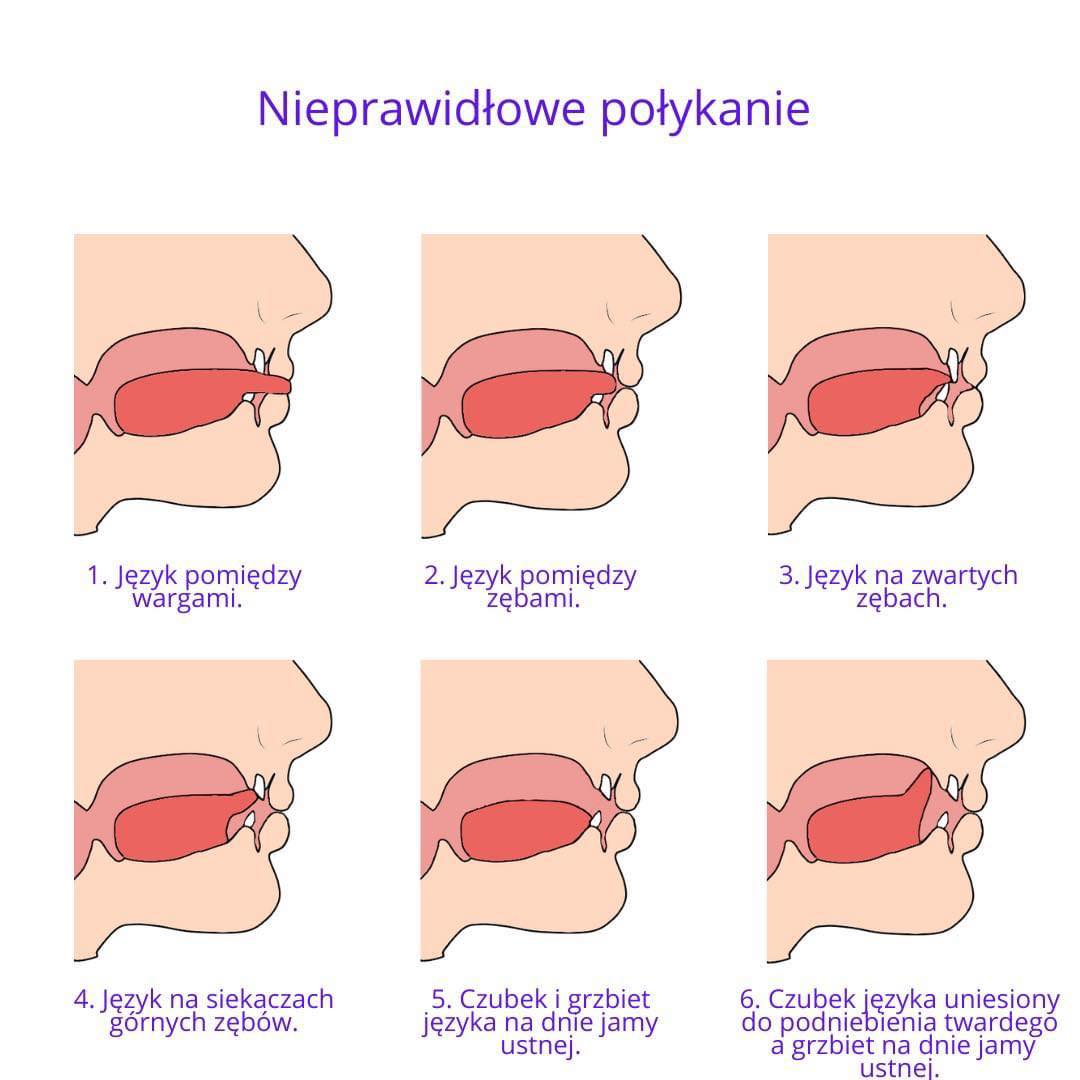Swallowing
Dentysta stomatolog Warszawa Ursynów ADENTIS / Services / Language is your friend / Swallowing
The sealed lips, teeth and tongue, as well as the soft palate, create a kind of wave that allows the food to travel further.
This mechanism is called swallowing.
Swallowing is a reflex that involves transporting food from the mouth through the throat and esophagus to the stomach.
There are three phases of the swallowing process:
1. oral
2. pharyngeal
3.esophageal.
Contractions of the transverse muscle of the tongue and the chin-lingual muscle cause the fragmented and mixed food to be formed into a food bite. In this way, the prepared food is placed on the tongue and then moved to the oral part of the throat.
There is an elevation and tension of the soft palate (closure of the route to the nasal cavity), bringing the palatal arches closer together (closure of the route to the oral cavity), and elevation of the larynx, closure of the vocal tract and epiglottis (closure of the airway).
The entire oral phase lasts about 0.3 seconds.
That is, we have a 0.3-second shortness of teeth during swallowing.
Teeth come together not only when swallowing food but also when swallowing saliva (check for yourself , check for yourself now)
A good recipe for the proper ingestion of food, the formation of the food bite and the formation of the correct wave during which food is swallowed is:
- Properly shaped dental arches (without malocclusion),
- properly functioning language,
- A non-hypertrophied palatine tonsil,
- normal tension of the mouth (the circular muscle of the mouth-the only sphincter of the oral cavity, and at the same time the antagonist of all other muscles of the oral cavity)
- Proper head position and correct posture.

We all swallow every day: saliva, liquids, solid foods.
No one wonders if they are swallowing correctly until they go to a speech therapist or orthodontist, for example. And although the reasons for the visit are quite different, it turns out by chance that incorrect swallowing is an obstacle to other pursuits.
Swallowing with abnormal tongue positioning, after the age of 3-4, may involve holding the tongue:
- Between the lips, between the teeth,
- On compact teeth,
- On the incisors of the upper teeth,
- With the tip and ridge on the bottom of the mouth,
- with the tip raised to the hard palate and the back lying on the bottom of the mouth.
Can proper swallowing be taught after 3-4 yrs. ż. With a wide tongue raised to the palate?
Of course it is, and regardless of age. It is best to go to a speech therapist’s office to efficiently change an incorrect habit under the supervision of a specialist.
Dr. Gabren
